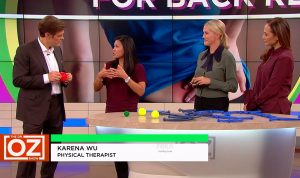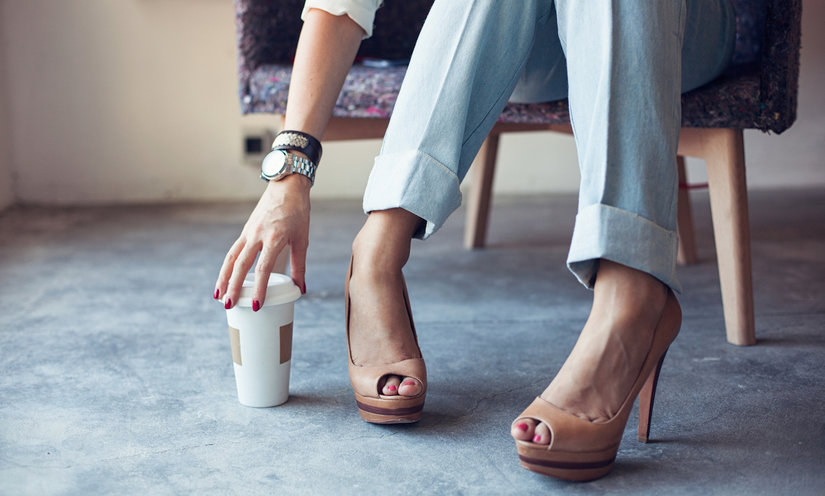 ActiveCare Physical Therapy, PC
ActiveCare Physical Therapy, PC
29 West 38th Street
Suite 601
New York, NY 10018

Love Wearing Heels? 3 Options That Won’t Destroy Your Body
By Karena Wu, as published in MindBodyGreen
 There is such a thing as love at first sight.
There is such a thing as love at first sight.
Like the first time you saw your now-favorite shoes on the shelf at a store: that whirlwind of ecstasy you felt at having finally found your ideal sole mate. Hearts melt for beautifully crafted heels.
The popular shoes are an iconic symbol for power and sexuality. Stilettos, boots, pumps, wedges … as long as there’s added height, the inner lift will be there, and a more confident you will emerge. Alluring yes, but time for the bad news: one of these days, those heels will walk all over you. As euphoric as leg-lengtheners can be, they come with a painful price.
As a physical therapist, I realize heel lovers are becoming too attached to their feisty footwear, completely disregarding their pain probability. It’s become my mission to educate women on the dangers of heels and eliminate their pain as much as possible.
My hope is you’ll read these six potential high heel issues and change your thoughts on sky high shoes:

1. Achy ankles
When wearing heels, your ankles are vulnerable. They’re not aligned in the most stable position, meaning there’s more movement in the joint. You might as well be auditioning for “Bambi On Ice” while you totter around on heels — that’s how unstable your ankles are.
Platform heels in particular reduce control in the forefoot. This means that movements aren’t as accurate or stable, inevitably leading to more stumbles and falls. Runway models … how do you do it?
2. Unlucky ligaments
There are three ligaments on the outside of your ankle versus five on the inside. This means that even on a level, flat surface, the outer ankle is far more vulnerable and prone to giving out. Now add in the four-plus inches of a skinny heel at an improbable angle … those ligaments are in danger.
3. Crying calves
Adding calf raises to your workout routine is a great way to strengthen your lower leg, but when your calves are permanently raised throughout the day (the position they’re in while wearing heels), they’ll start crying out. Wearing heels leaves our calves in a shortened position, causing the muscle to tighten more and for longer than they should.
4. Cramp crisis
The combination of tight muscles, tight heel cords and loose tendons in the front of the foot means more instability and irritation. If you wear heels, you’re probably all too familiar with charley horses in your legs and foot cramps.
5. Toe troubles
Even though there’s less weight on the forefoot while wearing heels (because of that aforementioned shortened calf), there’s still pressure that can lead to jamming of the toes (in closed-toe heels) or slippage of the toes (in opened-toe heels).
6. Unstable heels
When you walk in regular, flat shoes, your heel hits the pavement first, giving you support and stability. In high shoes your “heel” alone can’t support you because it has such a small surface area, so the rest of your foot has to compensate, often messing up the natural stride and rhythm of your walk.
Teetering in high heels limits natural strides — with more tension all around, the reduced stride length can lead to stiff knees and hips, shortened muscles, tight calves and plantar fascia.
So what’s a heel loving fool to do? Well, I know you don’t want to give up those lovely lengthening shoes altogether, so here are three shoe types that can give you a lift without all the pain:
- Wedge heels: They have a larger surface area, and more support and stability for foot/shoe contact with the ground.
- Platform heels: Platforms that are reasonably high (not five-plus inches!) allow your foot to be less plantar flexed (toes down) because of the raised toe bed. There’s also less weight in the ball of the foot because it’s more evenly distributed throughout the foot.
- Heels with ankle straps: The shoe stays on comfortably, so you don’t have to put in extra effort for balance.
Click here to read the original article, and to book an appointment, visit www.activecarephysicaltherapy.com.
Photo Credit: Stocksy
